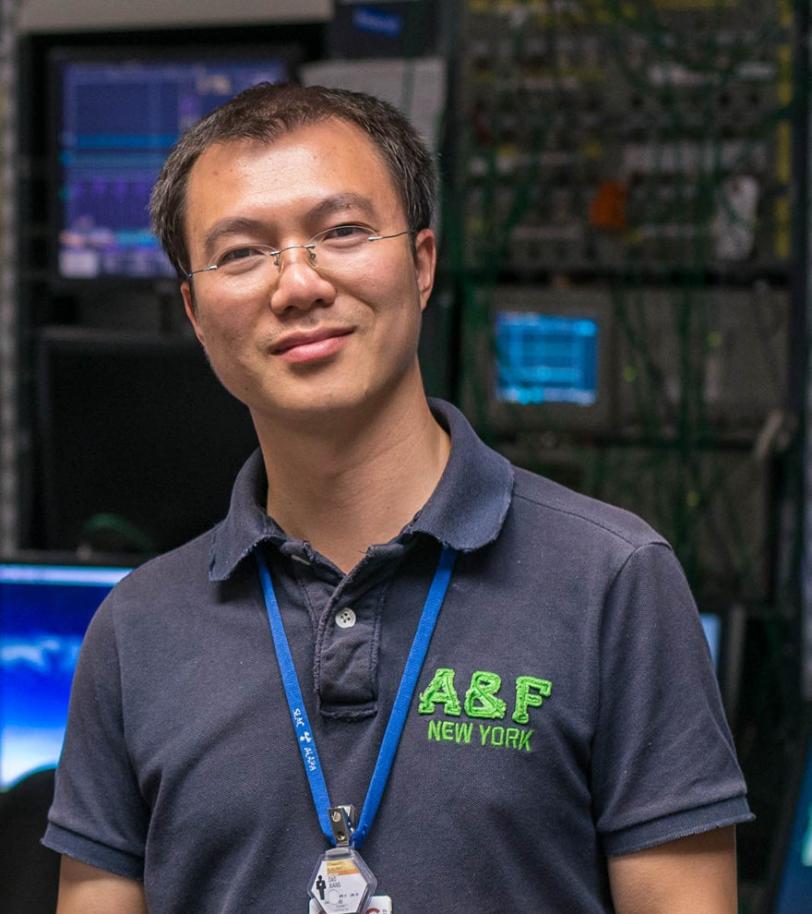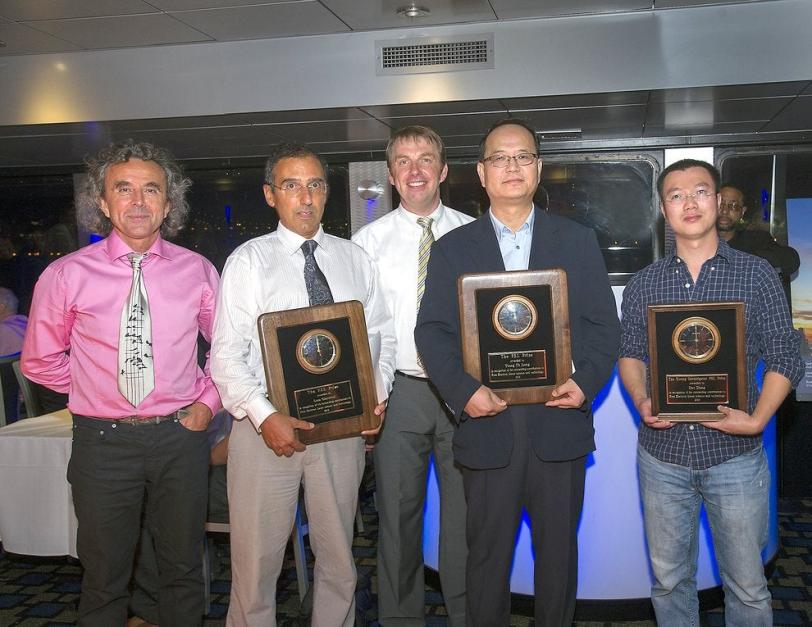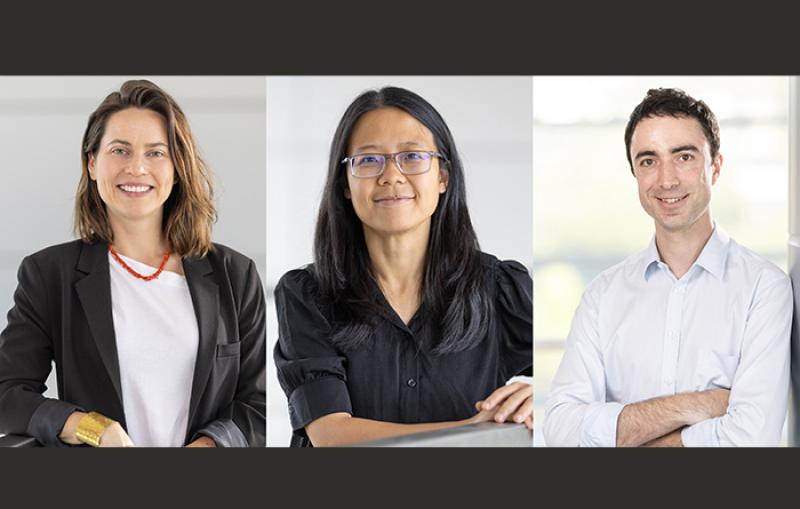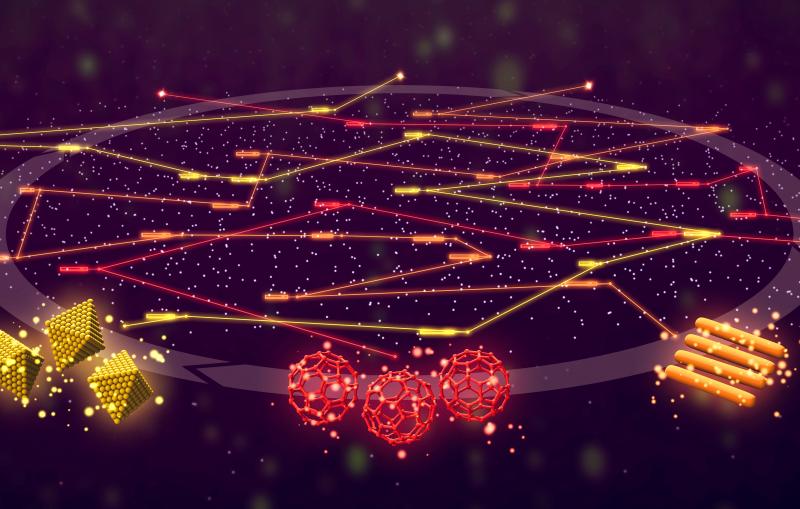SLAC Physicist Receives Free-electron Laser Award
Dao Xiang, a SLAC accelerator physicist, has received an international award for his work on a technique for tuning an electron beam with a laser to produce X-ray pulses with more uniform and predictable properties.
By Glenn Roberts Jr.
Dao Xiang, a SLAC accelerator physicist, has received an international award for his work on a technique for tuning an electron beam with a laser to produce X-ray pulses with more uniform and predictable properties.
The 2013 Young Scientist Free-Electron Laser (FEL) Prize, given on Aug. 28 during the International FEL Conference in New York City, recognizes important contributions to FEL science and technology by a researcher who is under 35. Last year's prize went to SLAC's Daniel Ratner.
"It's an honor to receive this award," Xiang said, adding that he considers the prize to be an important recognition of the team working on the project, dubbed echo-enabled harmonic generation (EEHG).
He added, "There is worldwide interest in this technique, which has the potential to change the design of future free-electron lasers" and could be incorporated in an upgrade of SLAC's Linac Coherent Light Source (LCLS) X-ray laser.
The LCLS produces X-ray light waves whose peaks and valleys line up with each other, but whose spacing varies during operation. So the X-ray pulses are "spatially coherent," or related in space, but not "temporally coherent," or related in time.
In contrast, EEHG uses a finely tuned laser to "seed" the electron beam and produce shorter-wavelength light pulses with enhanced properties. This could ultimately create X-ray pulses whose peaks and valleys are predictably patterned both temporally and coherently, greatly enhancing X-ray laser experiments.
Xiang, the lead scientist in SLAC's EEHG research, gave a talk during the FEL conference about the project's latest milestone: Producing pulses of light with a wavelength 1/14 as long as that of the seed laser used to create them. This is known as achieving the 14th harmonic. The goal of the EEHG program is to push on to the 75th harmonic by 2015 and to use an ultraviolet laser to "seed" the electron beam and create light pulses at X-ray wavelengths. If successful, the program would show a path forward for compact X-ray sources with finely tuned pulses.
SLAC beam physics theorist Gennady Stupakov, whose ideas led to the launch of the EEHG program at SLAC in 2009, said that Xiang got up to speed very quickly in the research program after his arrival as a research associate in 2008. "He became a leading member of a small team that designed and built the machine and carried out experiments," Stupakov said. "In no time Dao was generating new ideas, running simulations and testing them in experiments. He is now an accomplished physicist, full of ideas in various fields of FEL physics."
Tor Raubenheimer, principal investigator for the program and professor of particle physics and astrophysics, said, "Dao has done a fantastic job. He is one of the few people who is both an excellent theorist and an excellent experimentalist."
Norbert Holtkamp, director of SLAC's Accelerator Directorate, added, "Dao is one of our young, really bright scientists and this is only one of the many contributions he has made in the past. Echo seeding may prove very useful for many soft X-ray FEL applications. His contributions help pave that road."
Xiang, who last year was selected for a DOE Early Career Research Award, noted that EEHG is just one slice of his work at SLAC. He is also researching techniques for enhancing the brightness of FEL pulses, producing trains of ultrashort X-ray pulses in different wavelengths or "colors," and using lasers to accelerate electrons – a so-called "inverse FEL."
Housed at SLAC's Next Linear Collider Test Accelerator (NLCTA), located at End Station B in the SLAC Research Yard, the EEHG program represents a collaboration of several lab departments. The research program is funded by the Department of Energy's Office of Basic Energy Sciences, and the NLCTA operation is supported by both the Office of High Energy Physics and the Office of Basic Energy Sciences.
Contact
For questions or comments, contact the SLAC Office of Communications at communications@slac.stanford.edu.







